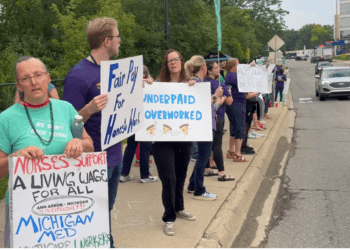Tony Daunt and Richard Houskamp
| The Detroit News
Just a few weeks from now, as voters, most of us will go to the polls and cast our ballots on Election Day. We’ll likely stay up late on Election Night, watching the returns come in and waiting to see who will win the White House and all other important positions.
The vote counting process, and election certification specifically, are critical steps in any election cycle, but you may be wondering how exactly do those procedures work?
As the two Republican members of the four-person Michigan Board of State Canvassers, we’re fortunate enough to play a part in the election certification process and want to walk through some of the basics. The Board of State Canvassers was created by our state Constitution in 1850. It’s comprised of two Republicans and two Democrats, each serving a four-year term. It’s our job to canvass and certify statewide elections, conduct recounts for those elections when they’re warranted, and canvass nominating and ballot proposal petitions to make sure they have enough valid signatures, among other tasks.
Election certification has been in the news a lot the last few years, but the bottom line is this: Certification of an election is a final, non-partisan stamp of approval on the results. It comes after ballots have been counted, recounted (if necessary), canvassed and reviewed. Whether it’s the Board of State Canvassers for statewide races or your local county clerk, election officials do one final review of the results to make sure they’re accurate and when all that work is done, we certify.
There isn’t a lot of wiggle room in certification. If ballots have been counted and they’ve been double checked and the results have been canvassed and there aren’t any mistakes, then certification happens. In other words, it’s usually just a formality.
We know people have questions about the process. That’s why we’re glad so much work happens beforehand to make it a process we can all trust.
Election officials and poll workers receive robust training before Election Day to familiarize themselves with Michigan’s election process, rules and laws. Additionally, transparency is a key part of our elections and voters are invited to witness it for themselves by signing up to be a poll worker or observer. If there are doubts about the machines used to tabulate votes, there are public audits and inspections you can attend.
The work doesn’t stop there. Local election officials ensure voter eligibility before a person can register to vote. Michigan also has a host of legal steps and requirements in place to count and verify results after the polls close. Then comes our job.
This is how our system works. It’s worked well for us in the past, and we’re certain it will work for years to come.
Tony Daunt and Richard Houskamp are Republican members of the Michigan Board of State Canvassers.
Source link : http://www.bing.com/news/apiclick.aspx?ref=FexRss&aid=&tid=66f61ba7992340b58aa56b113a462a7a&url=https%3A%2F%2Fwww.detroitnews.com%2Fstory%2Fopinion%2F2024%2F09%2F26%2Fdaunt-houskamp-michigans-election-process-is-safe-and-secure%2F75393717007%2F&c=14765846711777817477&mkt=en-us
Author :
Publish date : 2024-09-26 13:01:00
Copyright for syndicated content belongs to the linked Source.




